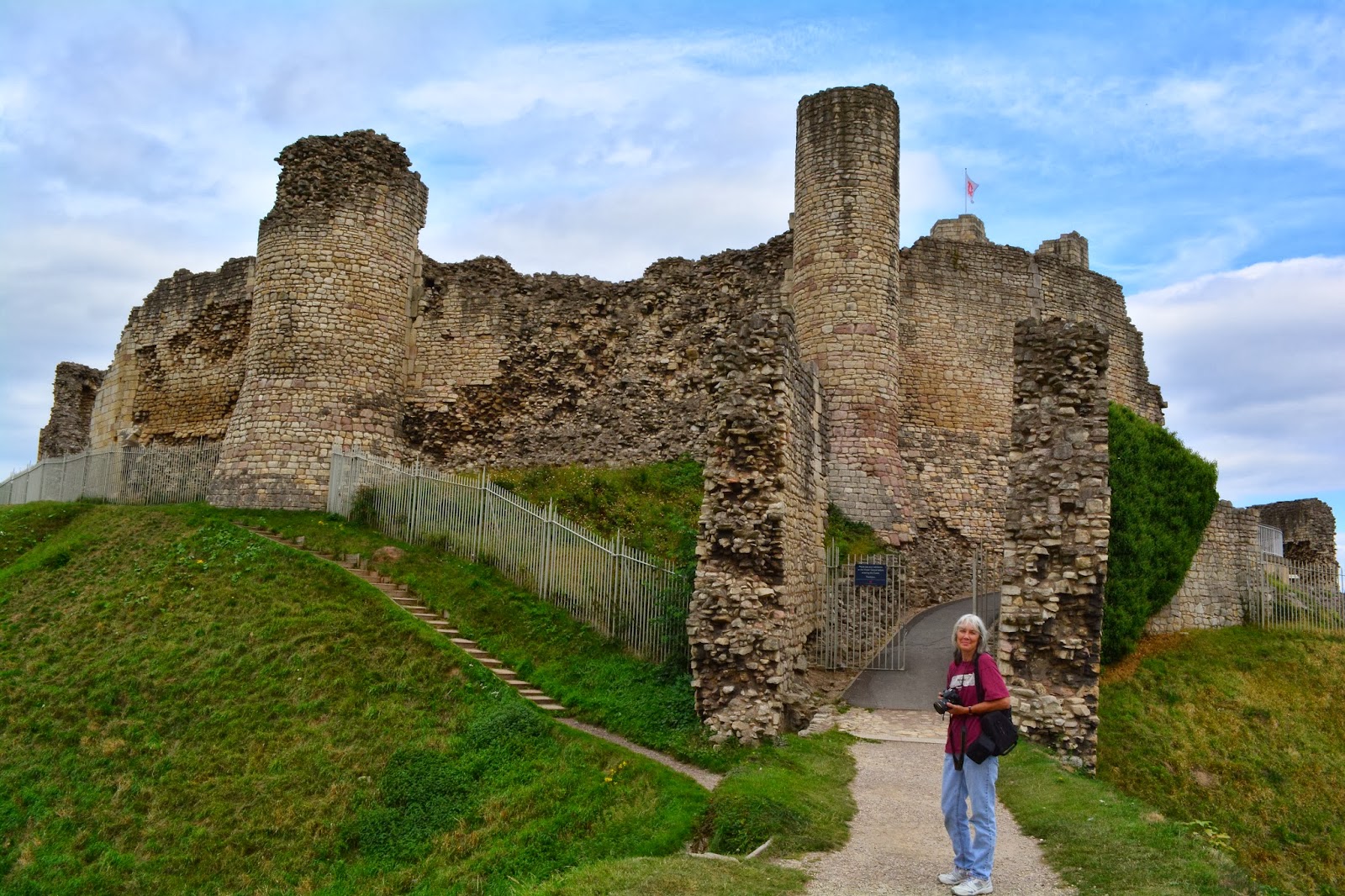We knew it'd be a while before we'd be back in York (if ever), but we were also happy to wrap up a middling four-night stay at the Lady Anne and say goodbye to the Buzzard Sisters, who were faithfully holding court in the garden as we wheeled our luggage past them to the car.
York still holds an almost mystical grip on us both, but it was time to move on.
South, as the plan would have it, but like last year we started the route headed north. Sharon had pinned a couple of churches at Wigginton and Haxby, close-in York exurbs that seemed easy enough to fit into the schedule.
 |
| St Nicholas - Wigginton |
Both villages are ancient, pre-dating the Domesday Book, but neither church was particularly historic. Wigginton's parish church (St Nicholas) was built in 1869, replacing an older structure from the fifteenth century, and Haxby's (St Mary) was built in 1878.
 |
| St Nicholas - Wigginton |
 |
| St Mary - Haxby |
 |
| St Mary - Haxby |
Back on the road.
We'd had the next destination in our back pocket for a few days.
Chatting with Miss Jones at Kirkham Priory, we mentioned that we were really into old churches, and she recommended we make a stop at the Saxon-era St John the Baptist, in Kirk Hammerton.
 |
| St John the Baptist - Kirk Hammerton |
 |
| St John the Baptist - Kirk Hammerton |
Most of the churches we visited have a little guide book for the tourist, usually no more than a pamphlet commonly traded for a recommended donation of a pound or two. We donated gladly to every church, at least the ones we could gain access to; a little corner of our home office now hosts an irregularly stacked clutch of English parish church pamphleture, a pretty dire collection of arcana.
By contrast, Kirk Hammerton's guide is forty pages, detailing the history of the place (as much as is known, and a lot isn't), with grainy photos of long-dead benefactors and selected views of the building's features, as well as some commentary on the quality of various restorations and additions that the ancient church has endured. St John the Baptist escaped complete demolition at least once, in the 1780's, and some of the over-eager early Victorian restoration was subsequently and successfully reversed.
 |
| St John the Baptist - Kirk Hammerton |
Church attendance in the 19th century was dropping; maybe, somebody thought, it was in part due to expecting parishioners to sit on crude, creaky pews in drafty and crumbling Early English churches susceptible to catastrophic collapse at more or less any time. Maybe renewed and modernized ones would help bend that curve.
It didn't, of course, but at least on that level we can be assured that their intentions were virtuous. Or something.
And to be fair to the Victorians, some portion of their work was directed toward structures that were decaying toward irretrievable ruin. Some churches were saved from oblivion during the restoration frenzy. (And some weren't...here's one that wasn't, we'll get to this one in a few days.)
 |
| Not restored - St John, Stanton, Suffolk |
How much of that church had been once-overed by some bearded and furiously gesturing Victorian architect was usually not apparent until we creaked the door open and stepped inside. For a couple of antiquity-crazed American neophytes, we learned to savor that certain thrill in crossing the threshold into an ancient parish church, even if we knew that what awaited inside may not be a pristine time-capsule of medieval worship.
 |
| St John the Baptist, Kirk Hammerton |
But in reality, despite all the preceding blather about the Victorians and their re-costuming of ancient churches, Kirk Hammerton is a slightly different case study. In 1887, the place came under the benevolence of one Colonel EW Stanyforth, the grand-nephew son of the village's churchwardon. The church had already been enlarged twice, once in the twelfth century (it was already two hundred years old by then) and again in 1834, but in the 1890's Stanyfield commissioned much of what is visible today, especially the startlingly vibrant mural paintings.
 |
| St John the Baptist, Kirk Hammerton |
 |
| St John the Baptist, Kirk Hammerton |
 |
| Saxon chancel - St John the Baptist, Kirk Hammerton |
The elegant and silently dignified Saxon chancel is the oldest portion of the church, and all there was to the place in the tenth century, but it's functionally a side chapel now.
The soaring artwork is the real star of the place, and that's barely a century and a quarter old. So a fair bit of the St John the Baptist is indeed Saxon, and the tower from the outside leaves little doubt as to its antiquity, but inside, the church beams and glows with its painted adornment. Stanyfield did this one right - the place is hypnotizing.
 |
| Saxon chancel, altar - St John the Baptist, Kirk Hammerton |
 |
| Chancel - St John the Baptist, Kirk Hammerton |
 |
Saxon stonework - St John the Baptist, Kirk Hammerton |
 |
| Saxon stonework - St John the Baptist, Kirk Hammerton |
 |
| Churchyard - St John the Baptist, Kirk Hammerton |
 |
| Churchyard - St John the Baptist, Kirk Hammerton |
 |
| Churchyard - St John the Baptist, Kirk Hammerton |
and headed off next to pick off a highlight destination further south that we had missed on our first day.
It was time to get our castle on.
